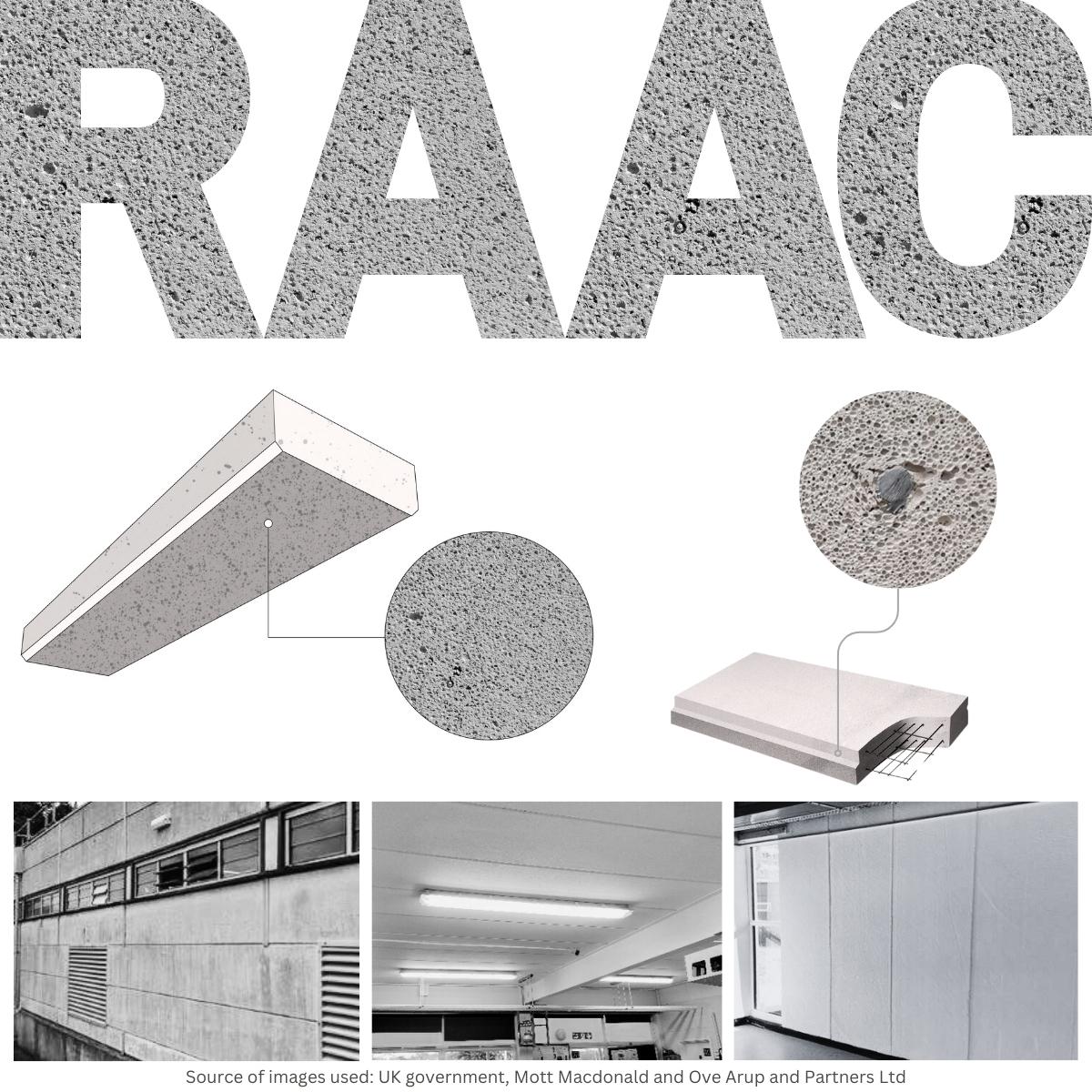Concrete is the bedrock of modern construction and researchers and engineers are constantly working to improve its properties, durability, sustainability, and performance.
Reinforced Autoclaved Aerated Concrete (RAAC) was invented in the early 20th century, primarily in response to the growing need for a building material that combined the benefits of traditional concrete with improved insulation and lighter weight.
Its invention can be traced back to Sweden in the 1920s, where it was initially developed as a response to the shortage of wood and the high demand for construction materials. Dr. Axel Eriksson, a Swedish architect, is often credited with pioneering the technology. The process involves mixing sand, cement, lime, and aluminium powder, which generates hydrogen gas when combined with water. This gas creates numerous tiny air bubbles throughout the mixture, resulting in a lightweight, porous material with excellent insulation properties.

Like traditional concrete, the process utilizes cement as a binder. However, the concept is taken further by incorporating aerating agents and subjecting the mixture to high-pressure steam curing in an autoclave, with the aim of enhancing its properties to make it more lightweight, insulating, and durable than conventional concrete.
RAAC’s development and adoption represent an important chapter in the evolution of concrete because it addressed some of the limitations of traditional concrete, such as its weight and lack of insulation properties. Its lightweight nature was hailed for its application in reducing the overall structural load. It was hailed for its applicability in constructing high-rise buildings and reducing transportation costs. Its insulation properties also appealed to those focusing on energy efficiency in buildings, an increasingly important concern in contemporary construction.

Key takeaways; Why was RAAC so appealing?
- Lightweight: RAAC’s low density, stemming from air voids within the material, not only reduced its weight but also contributed to thermal insulation, making it an attractive choice for energy-efficient buildings.
- Energy Efficient: RAAC’s excellent insulation properties, characterized by a high R-value, facilitated temperature control within buildings. This not only enhanced comfort but also translated into energy savings.
- Low cost: RAAC gained popularity due to its cheaper cost, compared to conventional reinforced concrete.
- Versatile: RAAC’s adaptability made it suitable for a wide array of construction projects, from residential buildings and commercial structures to institutional edifices.
Concrete Timeline:
1980s: With an estimated 30-year lifespan, it became evident that RAAC roof panels in 1950s buildings were reaching the end of their intended lifespan. Engineers discerned that some panels were inadequately thin for their spans, while others lacked sufficient steel reinforcement. Leaky roofs accelerated steel corrosion, exacerbating the situation.
1996: The Building Research Establishment (BRE) issued an “information paper” about pre-1980 RAAC concrete roof planks, highlighting concerns of “excessive deflections and cracking.” While immediate safety hazards weren’t confirmed, it was apparent that RAAC had a finite service life.
1999: The Standing Committee on Structural Safety (SCOSS) recommended inspections for schools with pre-1980 RAAC-plank roofs. Although the risk level appeared low, the engineering profession cautioned against complacency, emphasizing that the deterioration of RAAC planks did not necessarily imperil structural safety.
2018: The collapse of Singlewell Primary School’s staff room ceiling marked a turning point. This incident, following signs of structural stress, cast a spotlight on the structural vulnerabilities of buildings constructed with RAAC.
2019: SCOSS issued an alert, underlining the “significant risk” of RAAC failure and emphasizing that the 2018 collapse had occurred suddenly with minimal warning. An Institution of Structural Engineers (IStructE) study group was formed to delve into these concerns.
The story of RAAC emerges as a tale of the construction industry’s innovation, intricacy, and technical prowess. However, once celebrated for its lightweight, insulating properties, RAAC now serves as a stark reminder of the importance of meticulous inspections, rigorous maintenance, and, when necessitated, the replacement of building materials to ensure the safety and longevity of structures.
At Concept we have extensive in-house experience of structural investigations; over the last 25 years we’ve provided solutions to our clients on world heritage sites, government buildings, national museums, schools, offices and world-renowned hotels to name a few examples.
We’re now part of the Phenna Group (https://phennagroup.com/), and together we provide an unrivalled level of expert service in materials testing, condition surveys, building pathology, concrete inspection and all associated analytical services.
Please get in touch for more information at preconstruct@conceptconsultants.co.uk